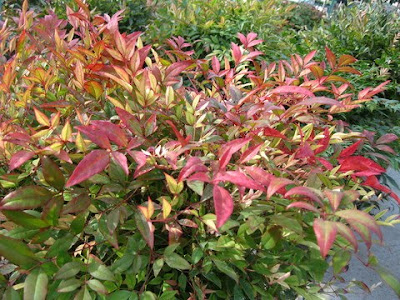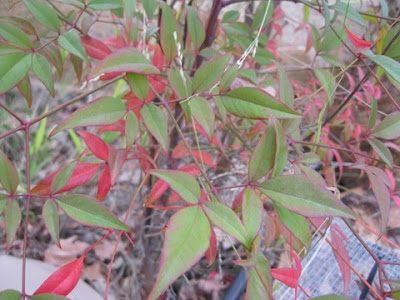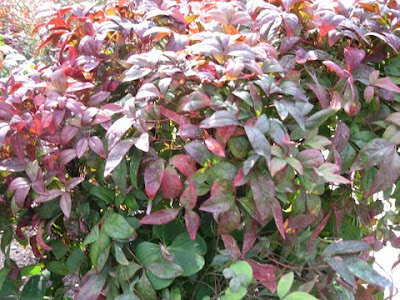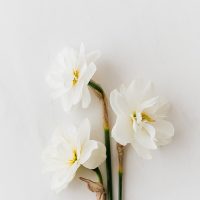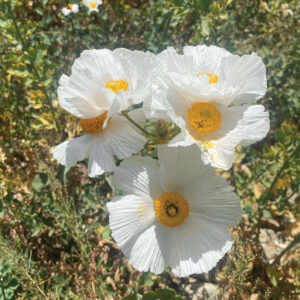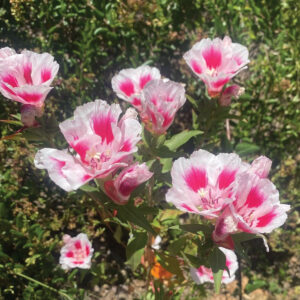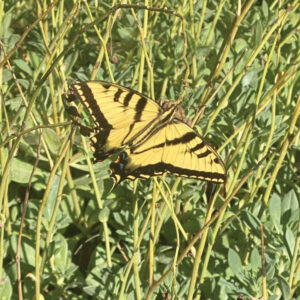Heavenly Bamboo, (Nandina domestica), is not relate to the Bamboo we know and love of either clumping or running variety.
The common name was given due to the cane like looking growth of the tall varieties and lacey foliage that it has, which bears some resemblance to bamboo. Although an evergreen nandina will lose it’s leaves if the temperature drops below 10 degrees Fahrenheit and at –10 Fahrenheit the canes will die back to the ground… it will however come back in the spring.
The reason that I use this plant in the garden is because it rarely hits those kind of temperatures so we have a reliably evergreen shrub that gives great color and has year round interest. The colors of green that you can find in all the varieties are astounding from blue green, through medium and into light green.
The foliage also puts on an amazing display and depending on the variety can range from yellow, to gold, to orange, to red, crimson, and even pink. In the spring new bronze tinged foliage emerges and is followed by flowers in a creamy white. The flowers make way for bright green berries and by the late summer the berries begin to ripen to orange and then red. The berries remain on through the winter or until the local birds strip them from the branches (which are still covered with beautiful lacey leaves.)
There are so many varieties of nandina that you can find one to fit almost any area you want to use it in. From tall varieties that can get to 8 feet to shorter bushier (my favorites) that are 2 or 3 feet high and as wide. These plants can be used as a screen or hedge, used at an entry or near a patio, and it even makes a great base for a container design. Nandinas do best in full sun with light shade during the hottest part of the day inland to get the most of it’s foliage color. It can also be grown in partial shade, so it is a very versatile plant. The one thing that the nandina needs is wind protection; it also likes a somewhat rich, acid soil and likes the soil to remain moist but can be drought tolerant.
Nandina likes to be transplanted in the cooler months of the fall, and to keep it in good shape careful pruning is essential especially with the taller leggier varieties such as domestica or Plum Passion. Pruning is best done in the spring, removing dead, and weak branches first and those closest to the ground as well as old sad looking canes. As with most plants you can remove about 1/3 of the canes at a pruning. Cosmetic pruning to shape can be done during most of the year as long as you don’t prune too much. A balanced fertilizer is all that is needed to keep your nandina in good health, and you will have many years of beauty from your plants.
For more about my designs: thegrassisalwaysgreener

